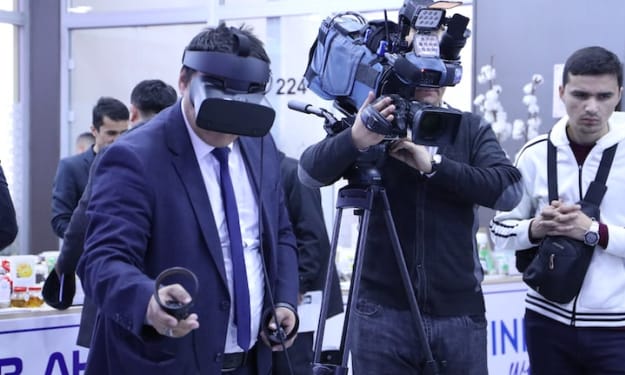VR Shopping: The Future of Retail Experience
Can anywhere anytime with VR

VR Shopping: The Future of Retail Experience
In the fast-paced world of technological advancements, Virtual Reality (VR) has emerged as a groundbreaking tool revolutionizing various industries. Among these, the retail sector is embracing VR shopping as the next frontier in enhancing the customer experience. This cutting-edge technology allows shoppers to transcend the confines of physical stores, offering an immersive and personalized retail journey. As we delve into the world of VR shopping, it becomes evident that it has the potential to redefine the way we interact with products, brands, and the retail landscape as a whole.
VR shopping presents a unique and unparalleled experience, leveraging the power of visualization and interaction. Through VR headsets or VR-enabled devices, shoppers can explore virtual stores, browse products, and even try them on virtually before making a purchase. This transformative experience bridges the gap between physical and digital shopping, combining the convenience of online shopping with the tangible experience of in-store browsing.
One of the most significant advantages of VR shopping is the ability to customize the shopping environment. Retailers can create stunning virtual showrooms, tailor-made to reflect their brand identity and aesthetics. This level of personalization helps build brand loyalty and fosters a deeper connection between consumers and products. Moreover, VR allows retailers to analyze customer behavior and preferences, providing valuable insights to improve marketing strategies and optimize product placements.
For consumers, VR shopping is an escape from the mundane. Imagine browsing through the latest fashion trends on a virtual catwalk or exploring a high-tech kitchen to try out virtual appliances. Such experiences transcend the boundaries of traditional shopping, allowing customers to indulge in a novel and exciting retail adventure from the comfort of their homes.
Additionally, VR shopping has proven to be an excellent solution for overcoming physical limitations. Elderly or differently-abled individuals can effortlessly access and interact with products in virtual stores, ensuring inclusivity in the retail experience. Furthermore, shoppers can visit international stores without leaving their homes, eliminating the barriers of distance and travel costs.
The integration of VR shopping also addresses environmental concerns. By reducing the need for physical stores and decreasing carbon footprints associated with logistics, this technology contributes to a more sustainable retail ecosystem. Additionally, virtual products and showrooms minimize waste generated by traditional brick-and-mortar stores, promoting eco-friendly practices.
However, while VR shopping holds immense potential, it is not without challenges. Technical barriers such as high costs, hardware requirements, and internet connectivity may limit its widespread adoption. Moreover, ensuring data security and privacy in the virtual world remains a crucial concern. Retailers must prioritize safeguarding sensitive customer information to maintain trust and confidence in this futuristic shopping approach.
In terms of market penetration, VR shopping is already gaining traction. Numerous major retail brands have invested in VR technology to enhance their customer experience. As VR headsets become more accessible and affordable, it is anticipated that more retailers, including small and medium-sized businesses, will integrate VR shopping into their marketing strategies.
The future of VR shopping holds even greater possibilities. As technology advances, augmented reality (AR) and mixed reality (MR) are expected to augment the shopping experience further. Imagine trying out virtual makeup and beauty products with AR filters or exploring a hybrid store where physical products are seamlessly integrated with virtual elements.
In conclusion, VR shopping represents a significant shift in the retail landscape, promising a dynamic and transformative shopping experience. This technology empowers consumers, fosters creativity for retailers, and addresses various challenges faced by traditional shopping. As the adoption of VR shopping continues to grow, it will undoubtedly shape the future of retail, ushering in a new era of immersive, sustainable, and customer-centric shopping journeys. Embrace the world of VR shopping, where reality meets imagination, and innovation knows no bounds.
About the Creator
Enjoyed the story? Support the Creator.
Subscribe for free to receive all their stories in your feed. You could also pledge your support or give them a one-off tip, letting them know you appreciate their work.





Comments (1)
Reminds me loosely of a game/anime series I used to watch with my younger brother. I'm realizing more and more of how fiction is becoming fact with AI/VR growing mainstream.